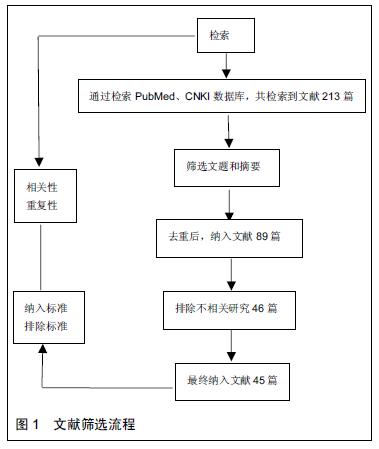| [1] Lan X,Xu JZ,Luo F,et al.[Analysis of postoperative recurrence reason and observation of reoperation outcome for spinal tuberculosis].Zhongguo Gu Shang.2013;26(7):536-542. [2] He QY,Xu JZ,Zhou Q,et al.Treatment effect, postoperative complications, and their reasons in juvenile thoracic and lumbar spinal tuberculosis surgery.J Orthop Surg Res. 2015;10:156. [3] Xu Z,Wang X,Shen X,et al.Two one-stage posterior approaches for treating thoracic and lumbar spinal tuberculosis: A retrospective case-control study.Exp Ther Med. 2015;9(6):2269-2274. [4] Ling T,Liu L,Yang X,et al.Revision surgery for spinal tuberculosis with secondary deformity after treatment with debridement, instrumentation, and fusion.Eur Spine J. 2015;24(3):577-585. [5] Shi JD,Wang Q,Wang ZL.Primary issues in the selection of surgical procedures for thoracic and lumbar spinal tuberculosis.Orthop Surg. 2014;6(4): 259-268. [6] Li J,Li XL,Zhou XG,et al.Surgical treatment for spinal tuberculosis with bilateral paraspinal abscess or bilateral psoas abscess: one-stage surgery.J Spinal Disord Tech. 2014;27(8):E309-314. [7] Liu Z,Liu J,Peng A,et al.One-stage posterior debridement and transpedicular screw fixation for treating monosegmental thoracic and lumbar spinal tuberculosis in adults. Scientific World J. 2014; 2014: 137106. [8] Jain AK,Jain S.Instrumented stabilization in spinal tuberculosis.Int Orthop. 2012;36(2):285-292. [9] Li JH,Zhang ZH,Shi T,et al.Surgical treatment of lumbosacral tuberculosis by one-stage debridement and anterior instrumentation with allograft through an extraperitoneal anterior approach.J Orthop Surg Res. 2015;10:62. [10] Xu Z,Wang X,Shen X,et al.One-stage lumbopelvic fixation in the treatment of lumbosacral junction tuberculosis.Eur Spine J.2015;24(8):1800-1805. [11] Li HJ,Zhang WB,Mo TT,et al.[Surgical treatment of lumbosacral tuberculosis by anterior debridement,bone graft,and posterior pedicle screw-rod internal fixation]. Zhongguo Gu Shang. 2014;27(10):829-832. [12] 傅一山,曾炳芳.腰椎管狭窄症外科治疗进展[J].国际骨科杂志,2007,28(3):163-164. [13] 蔡国强,李爱民.多节段开窗减压椎体问融合治疗退变性腰椎管狭窄症[J].济宁医学院学报,2009,32(3):193-194. [14] Schnake IL,Schaeren S,Jeanneret B.Dynamic stabilization in addition to decompression for lumb"spinal stenosis with degenerative spondylolisthesis.Spine (Phila Pa 1976). 2006;31(4): 442-449. [15] Yang BH,Ouyang Z,Zhao JL,et al.One stage anterior debridement, bone fusion and internal fixation for the treatment of lumbosacral tuberculosis.Zhongguo Gu Shang. 2013;26(7):546-548. [16] Jing ZZ,Song JF,Chen B,et al. [Application of sacral rod fixation for the treatment of lumbosacral segment tuberculosis.Zhongguo Gu Shang. 2012;25(11): 906-990. [17] Aili A,Zhang H,Tang M,et al. Multiple special formed titanium mesh cages in the treatment of lumbo-sacral spinal tuberculosis via posterior approach only.Zhong Nan Da Xue Xue Bao Yi Xue Ban. 2014;39(12): 1313-1319. [18] Pang X,Wu P,Shen X,et al.One-stage posterior transforaminal lumbar debridement, 360° interbody fusion, and posterior instrumentation in treating lumbosacral spinal tuberculosis.Arch Orthop Trauma Surg.2013;133(8):1033-1039. [19] Jin W,Wang Z.Clinical evaluation of the stability of single-segment short pedicle screw fixation for the reconstruction of lumbar and sacral tuberculosis lesions.Arch Orthop Trauma Surg.2012;132(10): 1429-1435. [20] 李照文.介绍一种新型脊柱动态内固定系统[J].生物骨科材料与临床研究,2014,11(2):59-62. [21] Fleischer GD, Kim YJ, Ferrara LA,et al.Biomechanical analysis of sacral screw strain and range of motion in long posterior spinal fixation constructs: effects of lumbosacral fixation strategies in reducing sacral screw strains.Spine (Phila Pa 1976). 2012;37(3): E163-169. [22] Fleischer GD,Hart D,Ferrara LA,et al.Biomechanical effect of transforaminal lumbar interbody fusion and axial interbody threaded rod on range of motion and S1 screw loading in a destabilized L5-S1 spondylolisthesis model.Spine (Phila Pa 1976). 2014;39(2):E82-88. [23] Qu DB,Jin DD,Chen JT,et al.[One-stage surgical management for spinal tuberculosis]. Zhonghua Yi Xue Za Zhi.2003;83(2):110-113. [24] Oga M,Arizono T,Takasita M,et al.Evaluation of the risk of instrumentation as a foreign body in spinal tuberculosis. Clinical and biologic study. Spine (Phila Pa 1976). 1993;18(13):1890-1894. [25] 瞿东滨,金大地,陈建庭,等.脊柱结核的一期手术治疗[J].中华医学杂志,2003,83(2):110-113. [26] Agholme F,Andersson T,Tengvall P,et al.Local bisphosphonate release versus hydroxyapatite coating for stainless steel screw fixation in rat tibiae.J Mater Sci Mater Med.2012;23(3):743-752. [27] Couzens GB,Peters SE,Cutbush K,et al.Stainless steel versus titanium volar multi-axial locking plates for fixation of distal radius fractures: a randomised clinical trial.BMC Musculoskelet Disord.2014;15:74. [28] Zhang H,Zeng K,Yin X,et al.Debridement, internal fixation, and reconstruction using titanium mesh for the surgical treatment of thoracic and lumbar spinal tuberculosis via a posterior-only approach: a 4-year follow-up of 28 patients.J Orthop Surg Res. 2015; 10(1):150. [29] Shen X,Liu H,Wang G,et al.The role of single-stage posterior debridement, interbody fusion with titanium mesh cages and short-segment instrumentation in thoracic and lumbar spinal tuberculosis.J Neurosurg Sci.2015.[Epub ahead of print] [30] Wang B,Lv G,Liu W,et al.Anterior radical debridement and reconstruction using titanium mesh cage for the surgical treatment of thoracic and thoracolumbar spinal tuberculosis: minimium five-year follow-up.Turk Neurosurg.2011;21(4):575-81. [31] Bao D,Ma YZ,Chen X,et al.[Exploratory development of titanium mesh with bone allograft in treatment of cervical spinal tuberculosis].Zhonghua Wai Ke Za Zhi.2010;48(2):112-115. [32] 矢庆明,殷明,顾玉荣,等.脊柱结核植入内固定安全性的体外实验研究[J].实用临床医学,2012,13(8):1-3. [33] Wong HM,Wu S,Chu PK,et al.Low-modulus Mg/PCL hybrid bone substitute for osteoporotic fracture fixation.Biomaterials.2013;34(29):7016-7032. [34] Kaya RA,Cavu?o?lu H,Tanik C,et al.The effects of magnesium particles in posterolateral spinal fusion: an experimental in vivo study in a sheep model. J Neurosurg Spine.2007;6(2):141-149. [35] 马立敏,张余,尹庆水,等.寰枢椎脱位手术镁合金与钛合金TARP内固定系统在屈伸状态下的三维有限元夯析[J].中国数字医学,2012,7(11):48-51. [36] 张余,马立敏,蓝国波,等.镁合金与钛合金经口咽前路寰枢椎复位内固定钢板治疗寰枢椎脱位的三维有限元分析[J].中华创伤杂志,2012,28(10):921-925. [37] 孔祥东,郝永强,王磊,等.新型医用可降解镁合金(JDBM)螺钉的生物安全性研究[J].组织工程与重建外科杂志, 2015,11(3):124-127. [38] Kiely KD,Wendfeldt KS,Johnson BE,et al.One-year postoperative stability of LeFort I osteotomies with biodegradable fixation: a retrospective analysis of skeletal relapse. Am J Orthod Dentofacial Orthop. 2006;130(3):310-316. [39] Bai B,Kummer FJ,Spivak J.Augmentation of anterior vertebral body screw fixation by an injectable, biodegradable calcium phosphate bone substitute. Spine (Phila Pa 1976). 2001;26(24):2679-2683. [40] 刘建宇,刘志坚,关骅,等.聚酰胺类可吸收人工脊椎体植入物的研究[J].中国血液流变学杂志,1998,8(4):46. [41] 蒋兴良,蔡建平,钱邦平,等.可吸收、解剖型颈椎椎间融合器的临床应用初步报告[J].徐州医学院学报,2006,26(3): 233-235. [42] Yang X,Song Y,Liu L,et al.[Effectiveness of nano-hydroxyapatite/polyamide 66 cage in anterior spinal reconstruction: a mid-term study].Zhonghua Wai Ke Za Zhi. 2014;52(1):20-24. Jun W,Yi-Jun K,Fei C,et al.Application of an antibiotic crescent-shaped polymethylmethacrylate strut in thoracic vertebral tuberculosis.Turk Neurosurg. 2013; 23(1):107-112. |
.jpg)

.jpg)